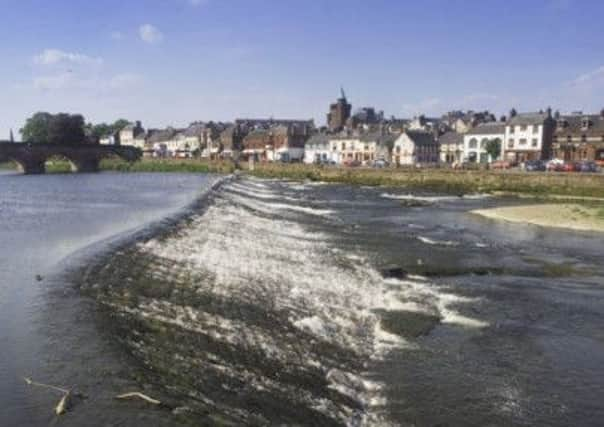Nith flood defences ‘to ruin Robert Burns river’


Dumfries and Galloway Council plans to build a wall and a large mound of earth nearly three metres high with glass viewing points running along the banks of the Nith in the Whitesands area for more than a kilometre.
Residents claim this will destroy one of the town’s beauty spots and that not enough thought has been put into cheaper, less intrusive alternatives, such as dredging the heavily silted river bottom.
Advertisement
Hide AdAdvertisement
Hide AdThe Reverend Andrew Crosbie, minister of St Bride’s Anglican Church and chairman of Loreburn Community Council, described the river as the town’s “one remaining asset”.
Claiming that there were serious alternatives to be considered, he said: “Quite a lot of people are starting to say, ‘Do we really need a high wall which will effectively seal off the town from the river forever?’.
“Should we not be looking at removing the levees that were put up after the war without anyone’s agreement and restoring the flood plains above the town and making them work a bit better by putting in a gate and a dam, so that during the periods of high tide and high risk, the water could be held back until the tide had gone out and then released in a controlled manner?”
Residents say that when the river overflows, the flooding is shortlived and usually recedes after a few hours.
Rev Crosbie said the proposals for the defences were at first welcomed because nobody had appreciated the scale of the project, but people now had serious concerns.
He said some residents believe that because the number of homes and businesses affected by the flooding was relatively small, it would be cheaper and more effective to give out grants for people to make their own provision.
There are also fears that building the defence would not eradicate flooding but just push it along the river.
The plans are now in the final phase of a consultation process, due to end in October. Work is expected to begin next year.
Advertisement
Hide AdAdvertisement
Hide AdRoy Kerr, from Kingholm Quay, who created moorings on the river for boats, said that halting the removal of gravel banks which build up along the riverside during the summer, along with tree planting, had contributed to the problem.
He said: “Water finds its own level. If water comes up in that area, it’s going to go underneath and up through the drains because there’s nothing to stop it.
“Clearing the river is not a big problem if it is done in the summer. It could be done very cheaply and very easily and that would alleviate a lot of the problems.”
He said that during the 1950s and 1960s, the town was hit by severe flooding which was tackled by dredging the river upstream.
However, Local Councillor Colin Smyth, Chair of the Economy, Environment and Infrastructure Committee, said that there was “widespread community support” for the defence proposals, which he said, in addition to tackling the flooding, would also make Whitesands “a far more attractive place to visit.”
He said: “The proposals were developed through one of the most extensive consultation processes I have ever been involved in, including numerous meetings with members of Loreburn Community Council who gave their backing to the Whitesands Masterplan.”
Smyth also said that work had been carried out to show that digging up gravel banks or allowing flooding upstream would not be effective, adding: “We have a once in a lifetime opportunity to tackle the flooding problem in the Whitesands and we will not be forgiven if we let down the local community by not delivering”.